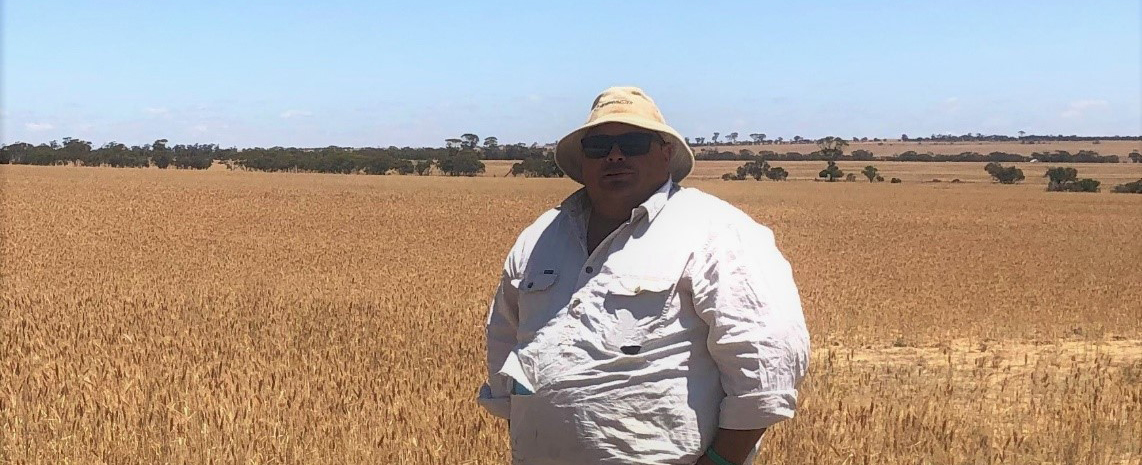Farming in the northern Wheatbelt has its challenges as Hugh Morgan of Morgan Tirrana Farms in Bencubbin can certainly attest to. Hugh farms the 14600 ha property with his parents and wife, Deanne.
In the last couple of seasons the Morgan’s have faced more than their fair share of challenges. In February 2020 a freak hail and rain storm took out significant farm infrastructure including 40 kilometres of fencing. The recovery prevented them from going ahead with their fodder farm plan under our Optimising Fodder Options in Mixed Farming Systems until just recently.
The Bencubbin property is unusual for the Wheatbelt in being livestock dominated. The Morgan’s run 4000 Merinos on 9000-11000 ha of pasture, cropping 3000-5000 depending on seasonal conditions.
The farm has a large range of soil types and problems. There is around 700 Ha of remnant bushland and cropping is managed with limited chemical use. Areas of the farm have been grazed under native pasture over decades.
Filling feed gaps, tackling salinity and maximising ground cover are key to the success of the system going forward in the face of climate change and increased extreme weather events such as was seen in 2020.
Despite the setback of two years ago the Morgans have been pushing ahead with expanding on their existing 200 Ha saltbush plantings. Last summer they had success trialling sorghum and this year they sewed wheat into an area of native pasture.
Working with Phil Barret Lennard (AgVivo) on a fodder plan has identified some new opportunities going forward. In the lighter soils Super Sweet Sudan could provide feed in some areas February to April, with serradella presenting another possibility, perhaps even sown into the native grasses. Biserrula is recommended on the heavier soils.
Other suggestions include mixed cereals with legumes such as peas, vetches, canola, etc for grazing in June and July, especially if confinement feeding is used in May and June to encourage a good establishment.
Phil is now working with the Morgan’s on prioritising these opportunities over the next 18 months. We are looking forward to following their journey.
This project is supported by funding from the Australian Government’s National Landcare Program.


